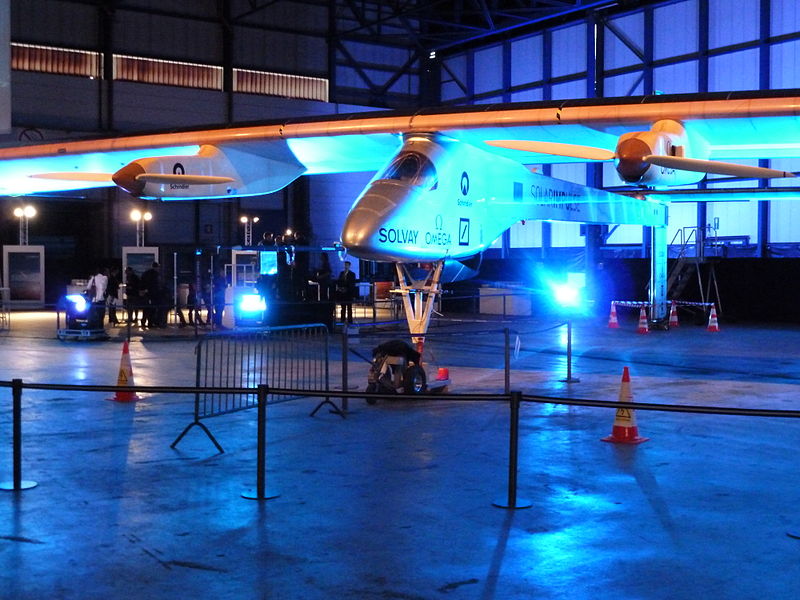Swiss psychiatrist, Bertrand Piccard, following in the family footsteps of a long line of scientific adventurers, is planning to eventually fly round the globe in the plane he has developed. Inventor, explorer and champion balloonist Piccard, 53, says the objective is to re-enact the history of powered flight using only solar energy, in an aircraft capable of remaining airborne without producing any polluting emissions.
Solar Impulse
Brussels was chosen as the first destination for the plane’s maiden voyage, partly due to the European Commission and Belgian chemical company Solvay‘s sponsorship of Piccard’s Solar Impulse project. Eariler test flights were carried out during the past few months in Payerne, Switzerland to verify satellite communication systems and air-traffic integration procedures. Piccard says that the testing has been successful and the project is now “in the definitive phase”.
The plane was due to be on show in Brussels in late May before an attempt to fly it to Paris-Le Bourget for the 49th International Paris Air Show. In 1999 Piccard, alongside Englishman Brian Jones, captained the first non-stop round-the-world balloon flight, achieving the longest flight in duration and distance in the history of aviation.
High Flyers
Born into a family of explorers and scientists, his grandfather Auguste Piccard, a physics professor at the Free University in Brussels (ULB-VUB), was Belgian cartoonist Herge’s inspiration for the “nutty professor” Cuthbert Calculus in the Tintin books. Star Trek’s Captain Jean-Luc Picard was named after Auguste’s twin brother Jean Piccard, also a high-altitude balloonist, who emigrated to the United States.
A chemist and engineer, Jean co-invented the plastic balloon with his American wife Jeannette, a chemist and latterly a NASA consultant, who flew a balloon to the edge of space, holding the women’s high altitude ballooning record for nearly three decades.
Back in Europe, Auguste designed balloons that made record-breaking altitude flights and became the first person to explore the stratosphere, the upper atmosphere, where he measured cosmic rays. Using similar technology, modifying the cockpit he had designed for high altitude, he went on to invent the bathyscaphe, a pressure resistant capsule designed for underwater use and the world’s first passenger carrying submarine, to explore the depths of the ocean.
Auguste’s son Jacques, Bertrand’s father, further developed the bathyscaphe and in 1960, financed by the US Navy, led a team to the bottom of the ocean, the deepest ocean trench known to man, nearly 36,000 feet below the surface , at 11 kilometres it is equivalent, going the other way, to the altitude at which planes on intercontinental routes now fly. It remains on record as the deepest ever manned dive.







